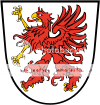So, I just finished my last exam and am now going to celebrate. But an update will probably come tomorrow.
Well, it will take at least another war to get those pesky Swedes back where they belong- and then there's the German Oppressor OPM's who, no doubt, got all their money from robbing Danish traders anyways...
For now, they do...
He is a level four (or five) artist. I basically justed picked up some stuff from Wiki, but as I understood what I read, Richard II was also a patron of Chaucer's. Now I see, that Richard in fact extended grants made by Henry III-anyways, Chaucer died just after Richard II, but I had to have him survive to show up 16 years later...
Oh, but they are eager to fight themselves... And the reign of Valdemar will be dwarfed by the Union of Kalmar, I'm sure
I do use royal marriages, but mostly to avoid wars and to keep my allies close. I don't hope to get into PU, but I wouldn't mind it either.
Excellent! We can only expect more war!
Well, it will take at least another war to get those pesky Swedes back where they belong- and then there's the German Oppressor OPM's who, no doubt, got all their money from robbing Danish traders anyways...
awesome more wars!
lets just hope they all go your way.. hah
For now, they do...
I doubt Chaucer would have left England after the death of Richard II as he was patronised by the lancasters (Henry IV's brood). Anyway, what is his skill level?
He is a level four (or five) artist. I basically justed picked up some stuff from Wiki, but as I understood what I read, Richard II was also a patron of Chaucer's. Now I see, that Richard in fact extended grants made by Henry III-anyways, Chaucer died just after Richard II, but I had to have him survive to show up 16 years later...
Poland-Lithuania is looking like quite the dangerous threat to your Baltic possessions. You'll have to smash them at some point if you truly want to restore the Danish hegemony over the North like Valdemar the Victorious did in the days of old.
But you've already gone some way on the road to restoring his old empire:

Oh, but they are eager to fight themselves... And the reign of Valdemar will be dwarfed by the Union of Kalmar, I'm sure
Hamborg is also a rightful danish possesion. Take it all!
BTW - do you use RM's and trying to get into personal unions ?
I do use royal marriages, but mostly to avoid wars and to keep my allies close. I don't hope to get into PU, but I wouldn't mind it either.



